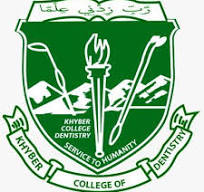FREQUENCY OF SELF MEDICATION AMONG PATIENTS PRESENTING WITH COMMON INFECTIOUS DISEASES AT KHYBER TEACHING HOSPITAL PESHAWAR, KPK, PAKISTAN
DOI:
https://doi.org/10.33279/jkcd.v11i02.146Keywords:
Self medication, Infectious diseases, Antibiotics, AnalgesicsAbstract
Objective:
To determine the frequency of self medications among patients of infectious diseases at Khyber teaching hospital Peshawar and to determine the type of medicines most commonly used for self medications in infectious diseases.
Materials and Methods:
It was a descriptive type of cross-sectional study and was conducted from 1st Dec 2018 to 31st July 2019. A consecutive non probability sampling of 310 people was taken from both the inpatient and outpatient departments of Khyber Teaching Hospital, Peshawar.
Results:
Of the 310 subjects included in the research 161 were female while 149 male. The prevalence of self-medication was found to be 65.79%. Commonly used medicines were antibiotics (28.49%), antipyretics (24.58%) and analgesics (10.06%). The most common (46.04%) reason for self-medicating was previous use of that drug while the choice of drug was most commonly (39.11%) based on a previous doctor prescription.
Conclusion:
Prevalence of self-medication was 65.79%. and was high in the educated population despite majority being aware of its harmful effects., in addition every stake holder in the health set up needs to play its part in curbing this practice.
Downloads
Published
How to Cite
Issue
Section
License
Copyright (c) 2021 Jehan Hussan, Hayat Muhammad Khan, Azrung Fayaz, Imran Ullah, Saifoor Ahmed Khan, Saeed Ahmed

This work is licensed under a Creative Commons Attribution-NonCommercial-NoDerivatives 4.0 International License.
You are free to:
- Share — copy and redistribute the material in any medium or format
- Adapt — remix, transform, and build upon the material
- The licensor cannot revoke these freedoms as long as you follow the license terms.
Under the following terms:
- Attribution — You must give appropriate credit , provide a link to the license, and indicate if changes were made . You may do so in any reasonable manner, but not in any way that suggests the licensor endorses you or your use.
- NonCommercial — You may not use the material for commercial purposes .
- No additional restrictions — You may not apply legal terms or technological measures that legally restrict others from doing anything the license permits.










